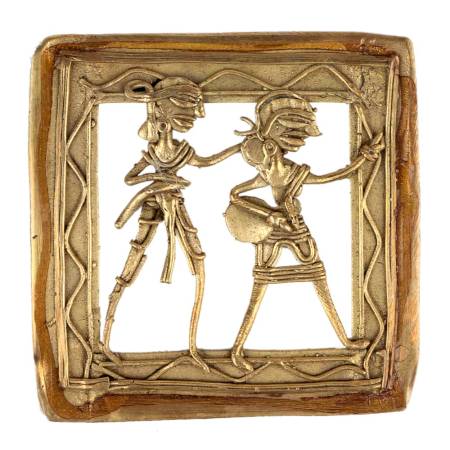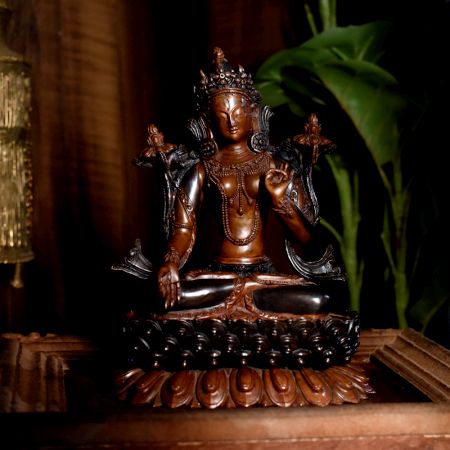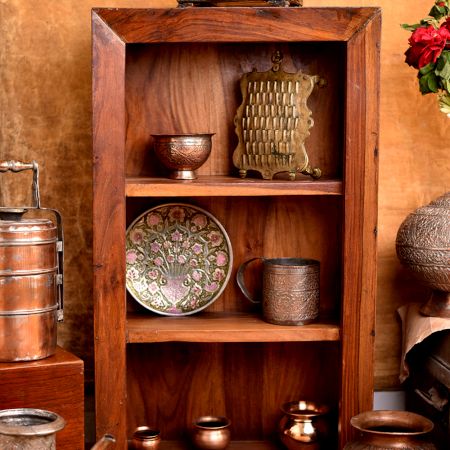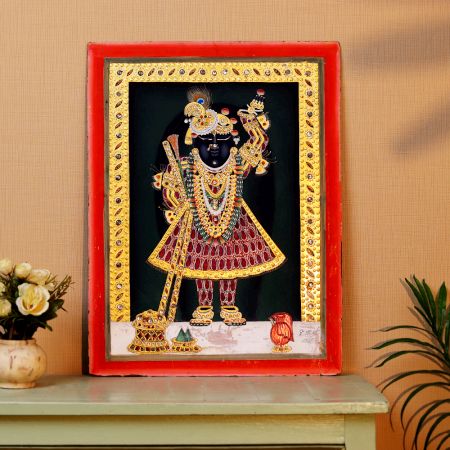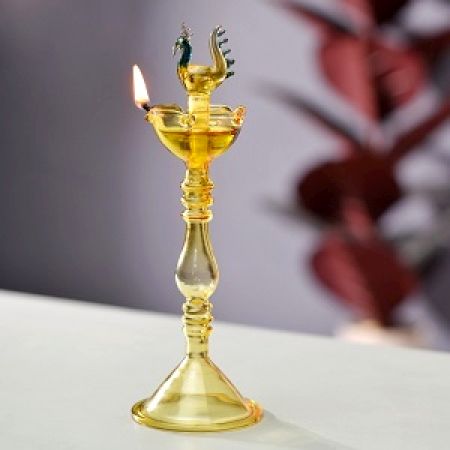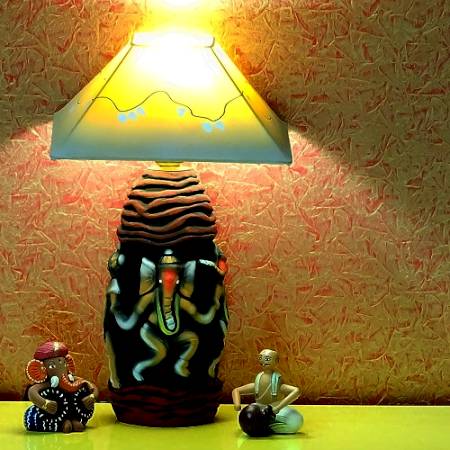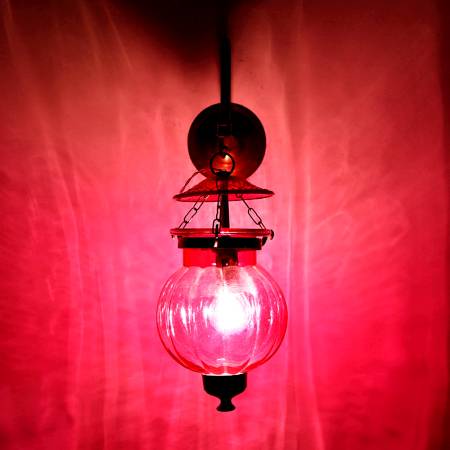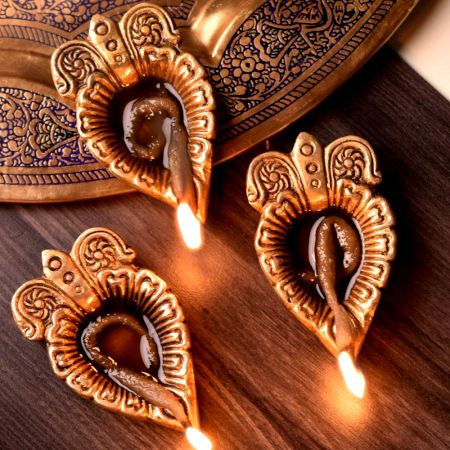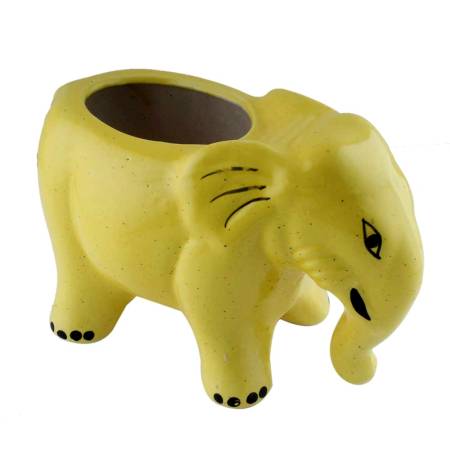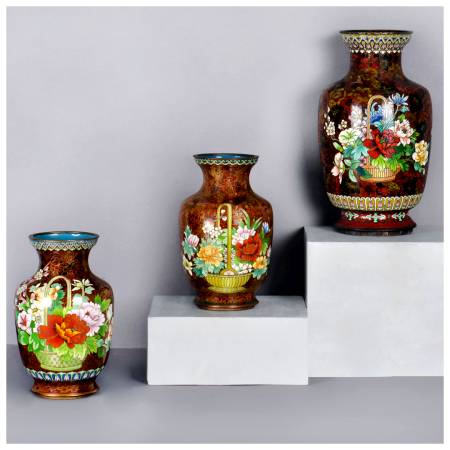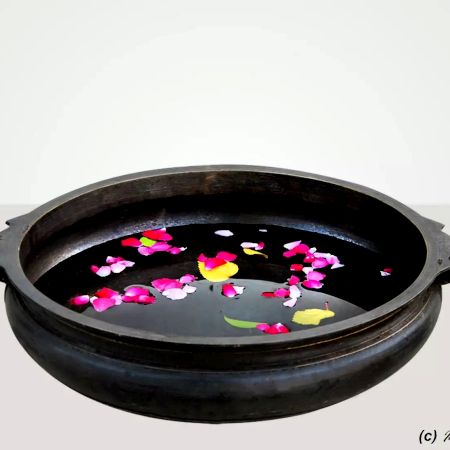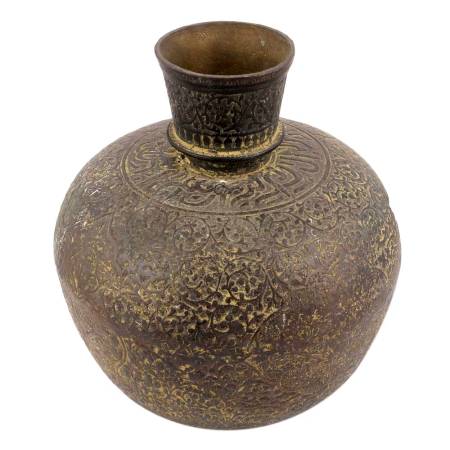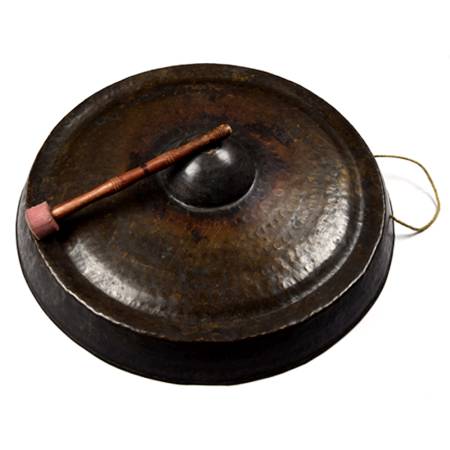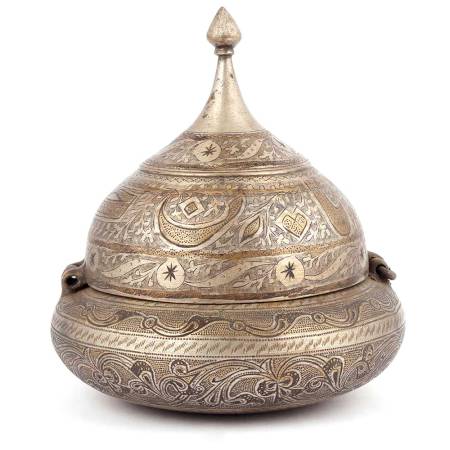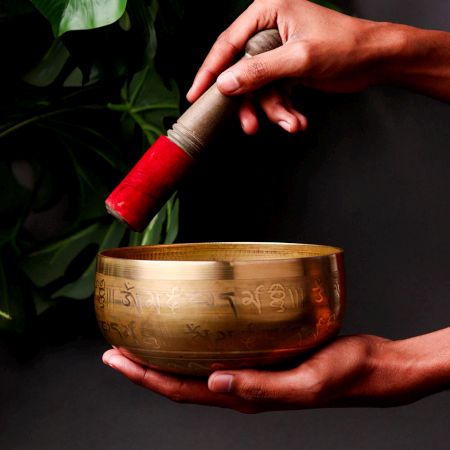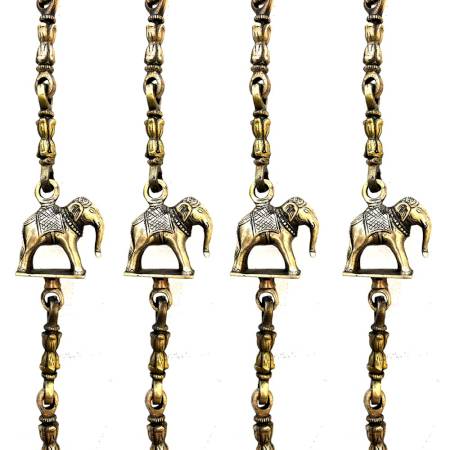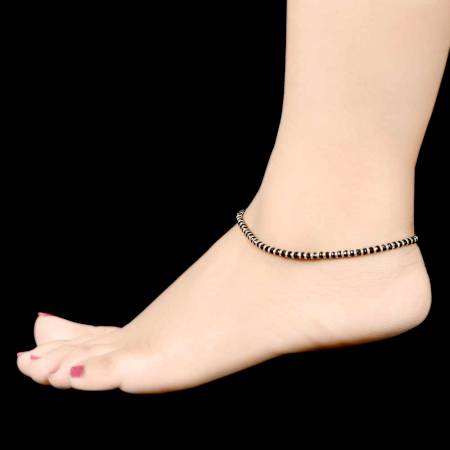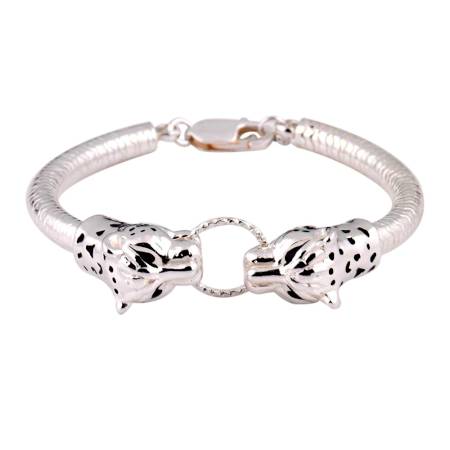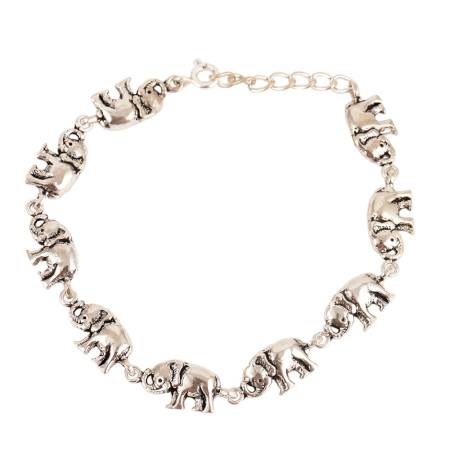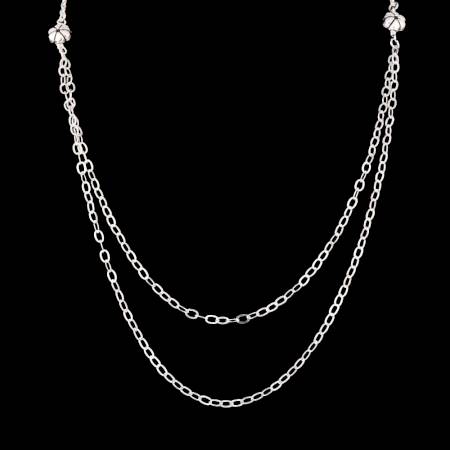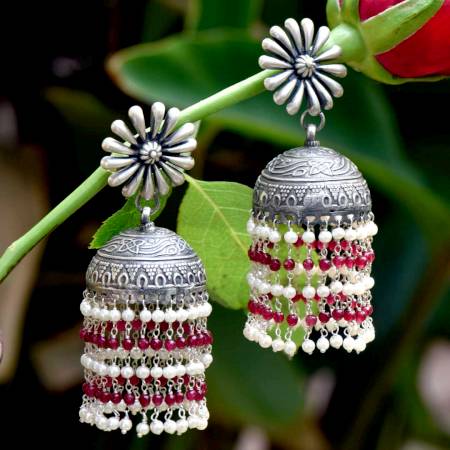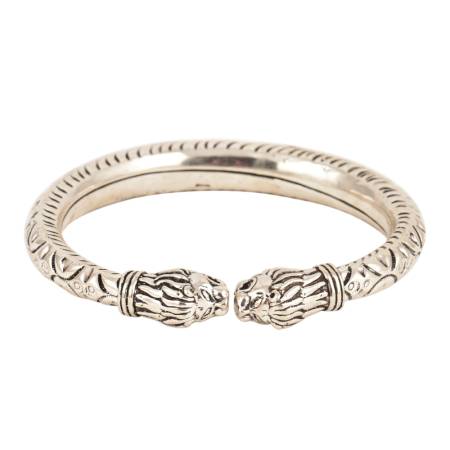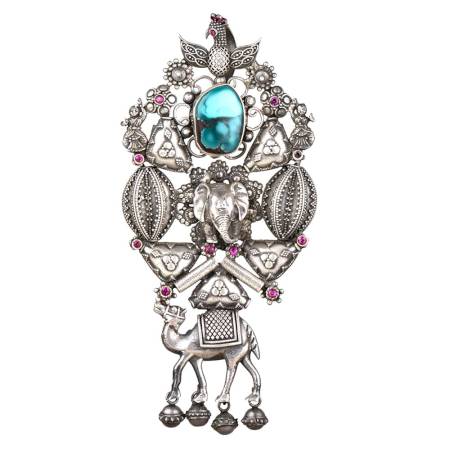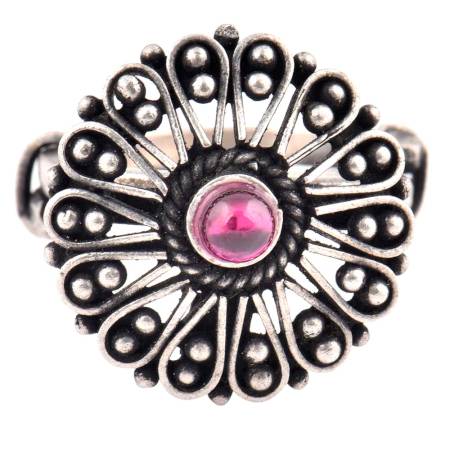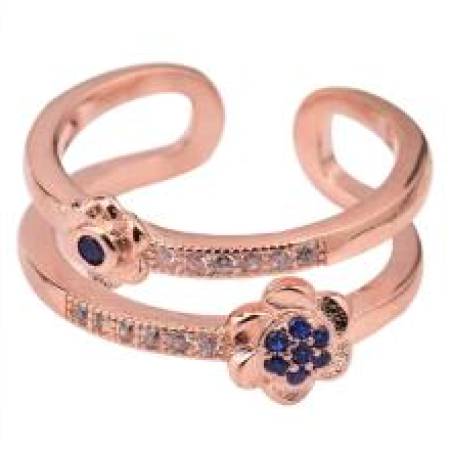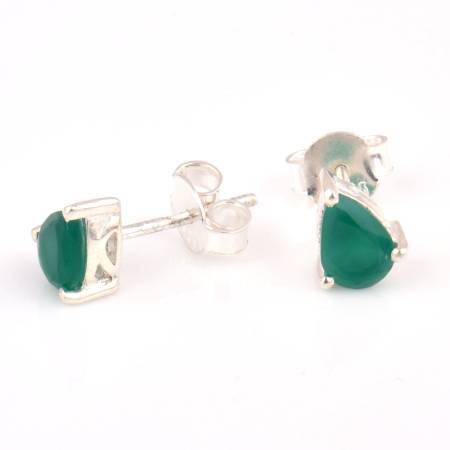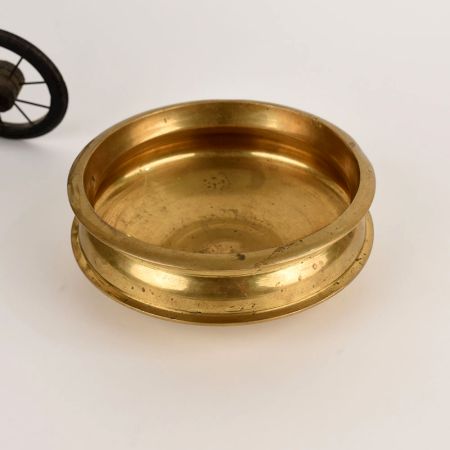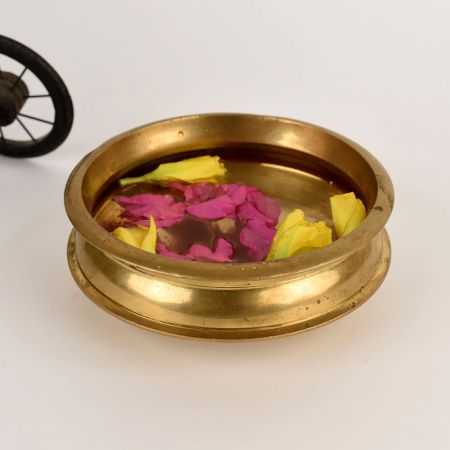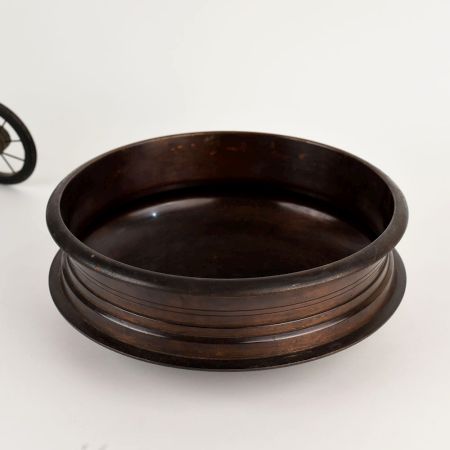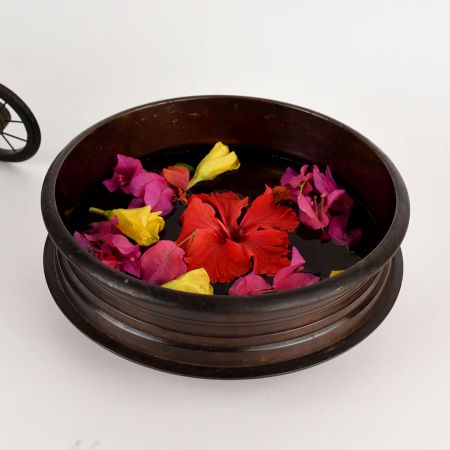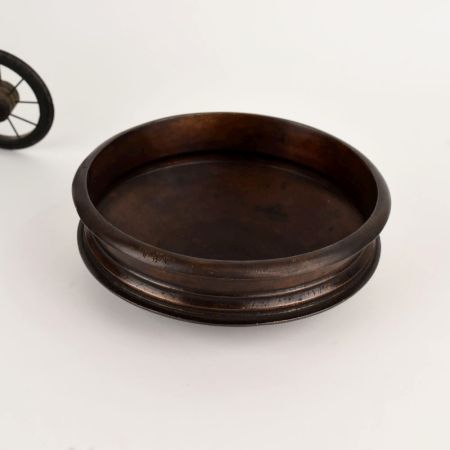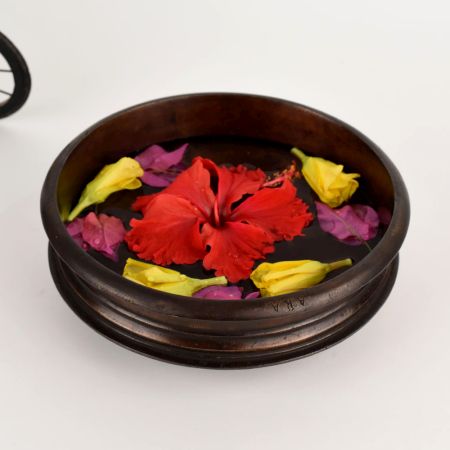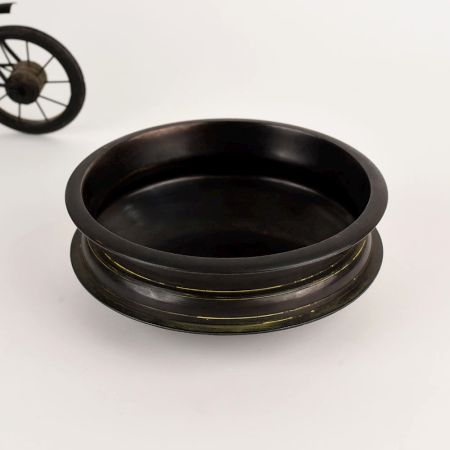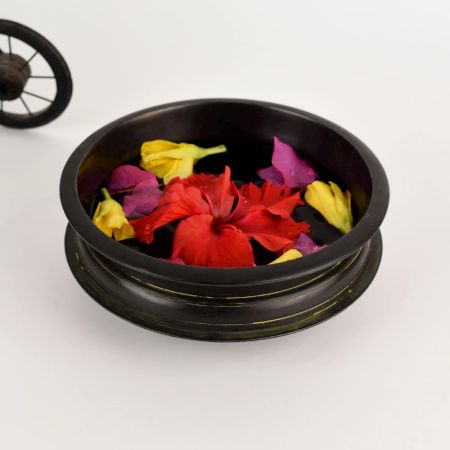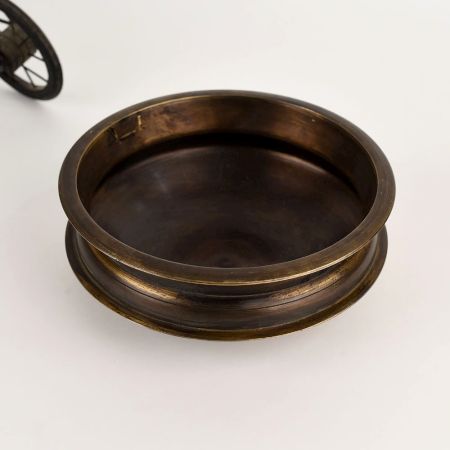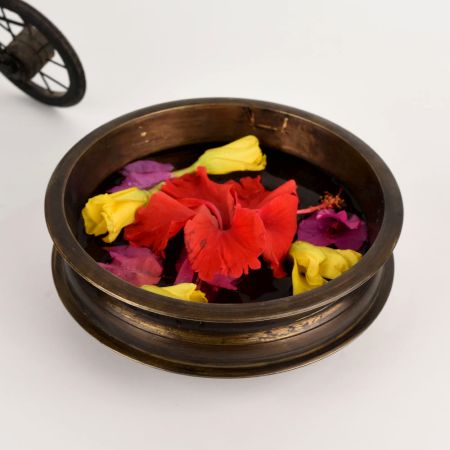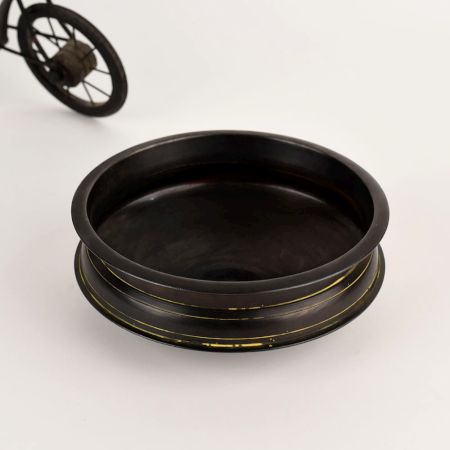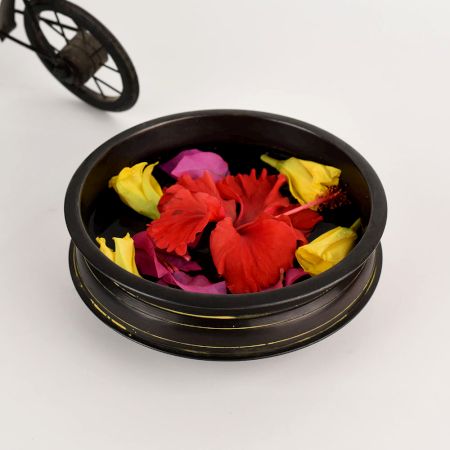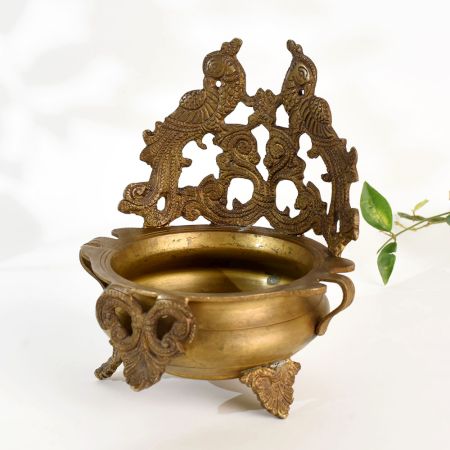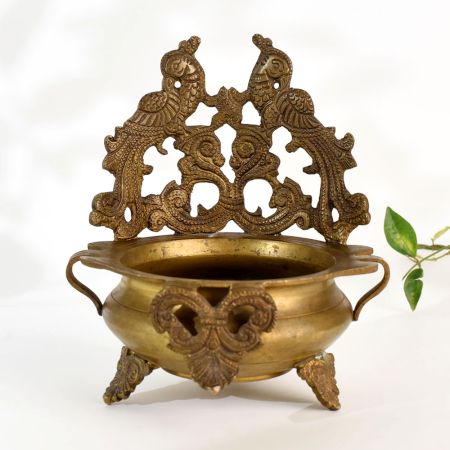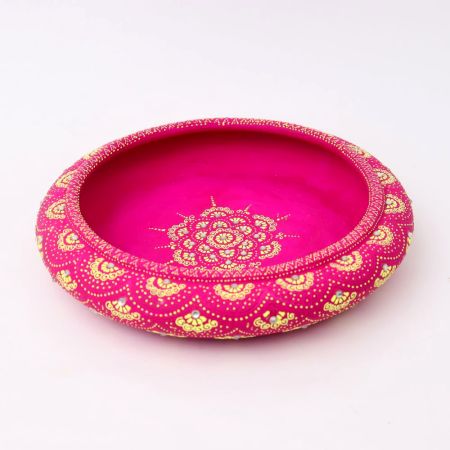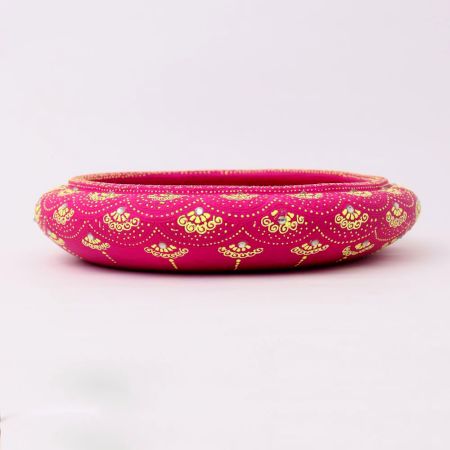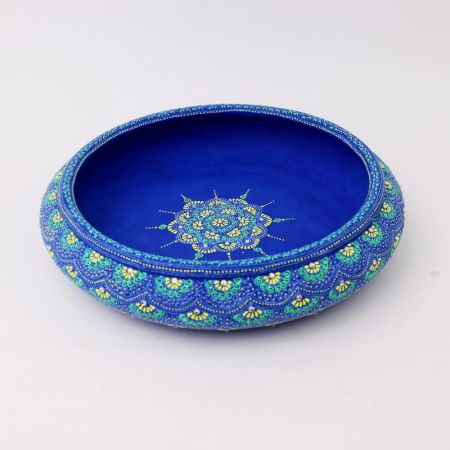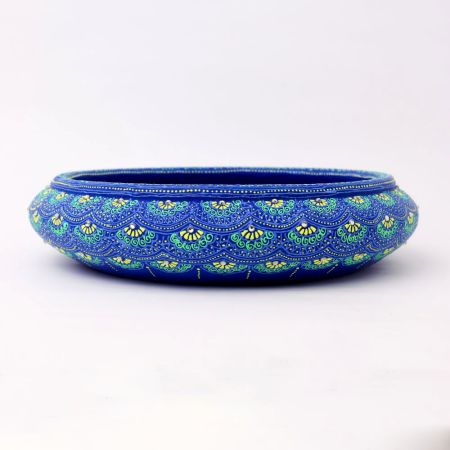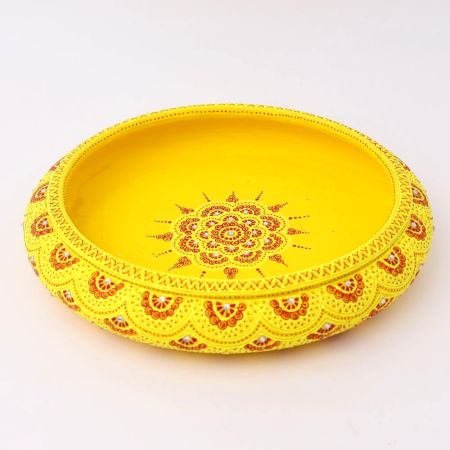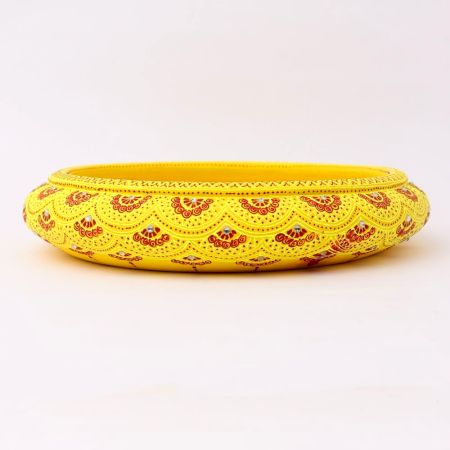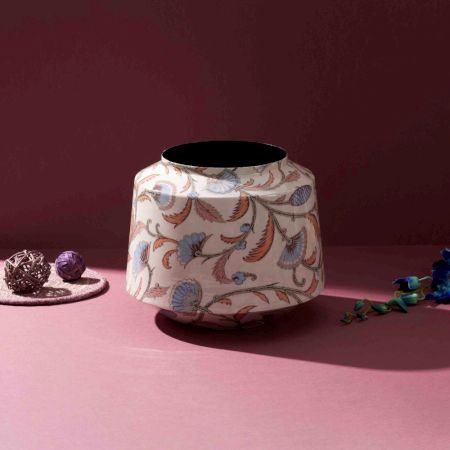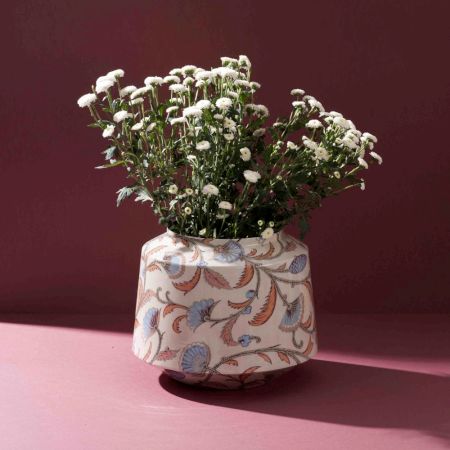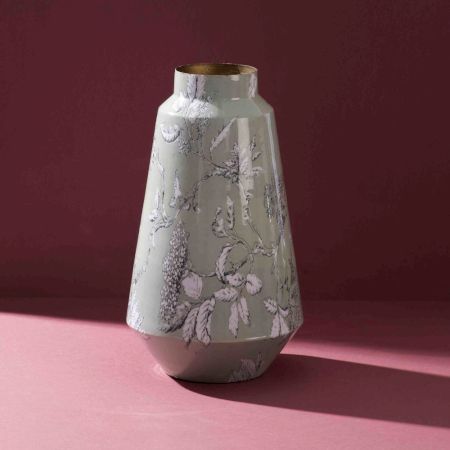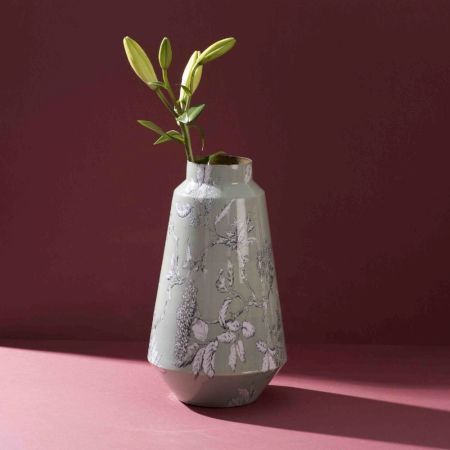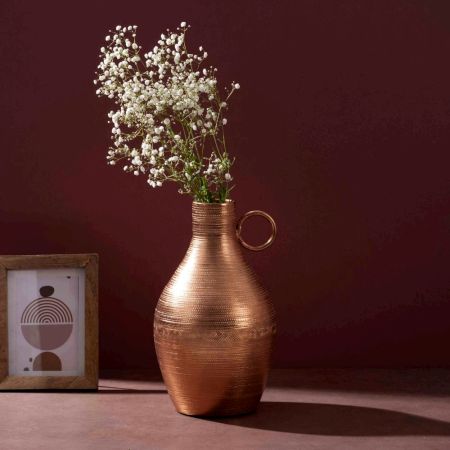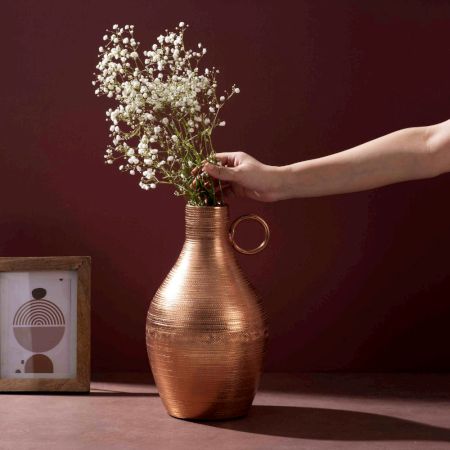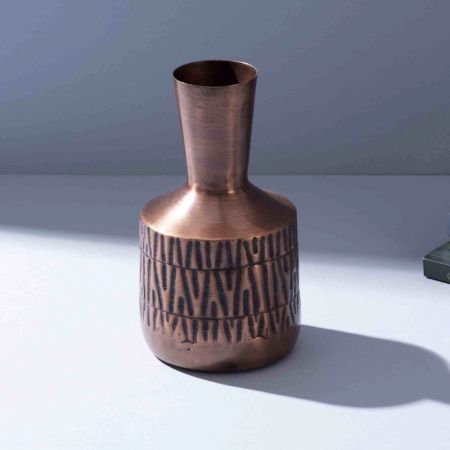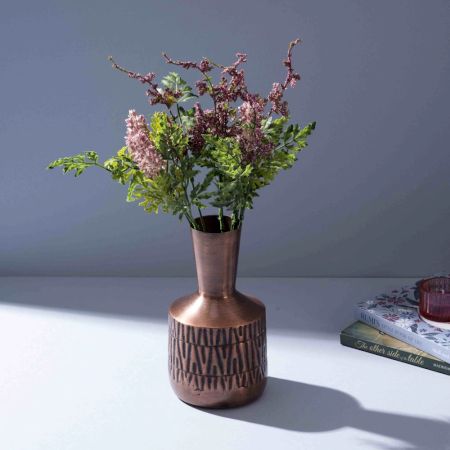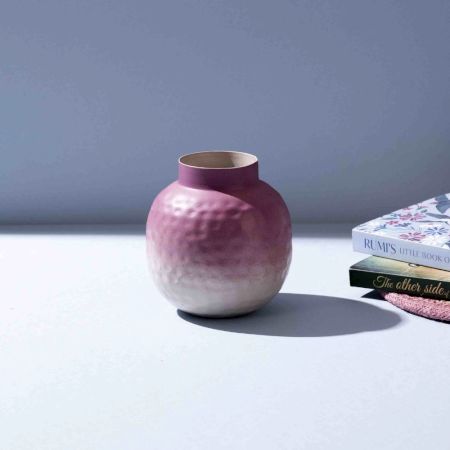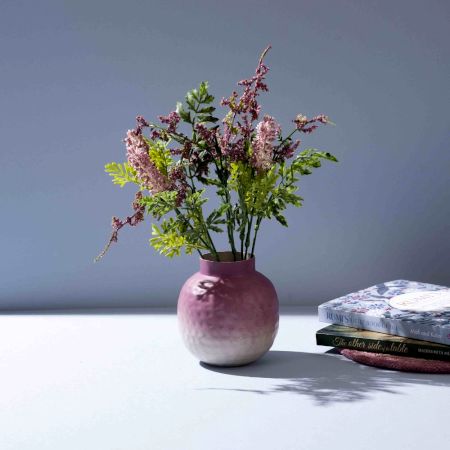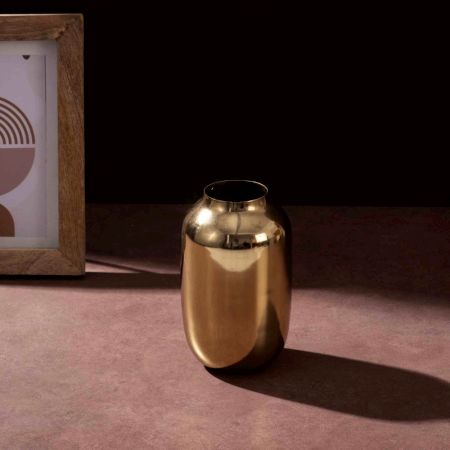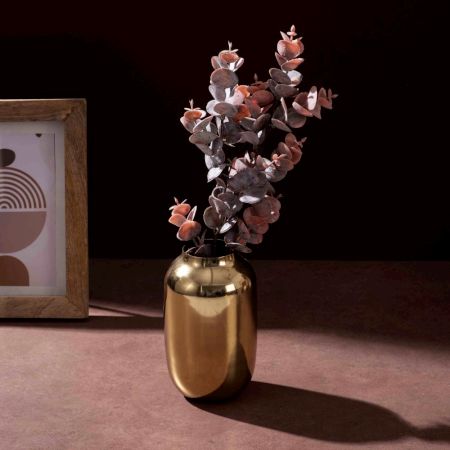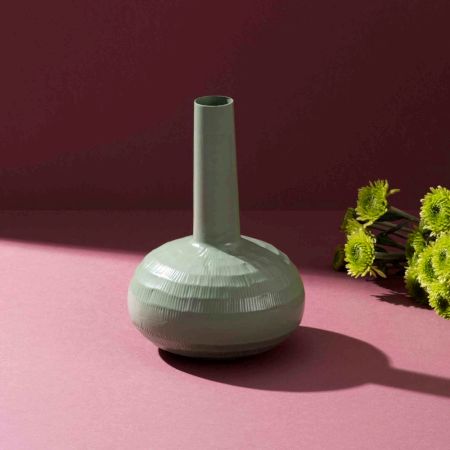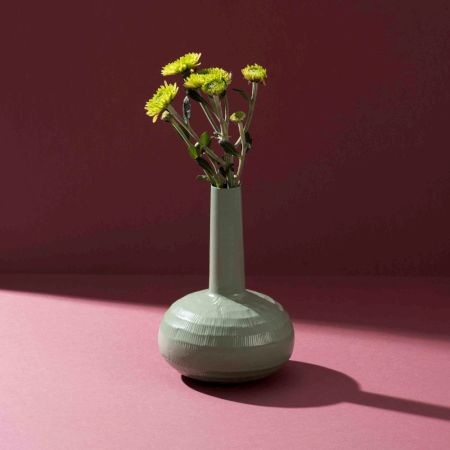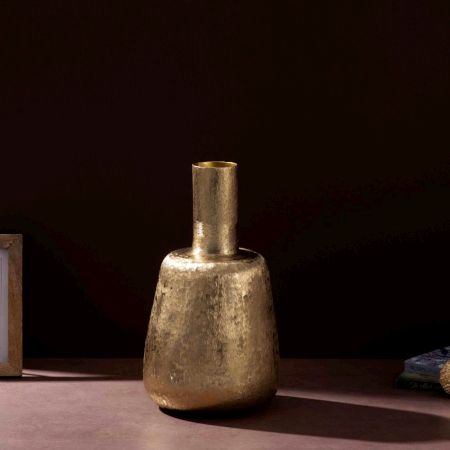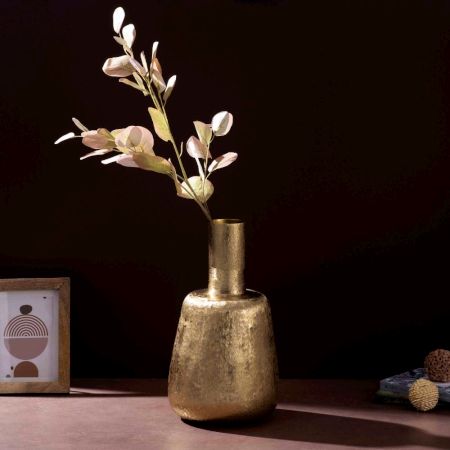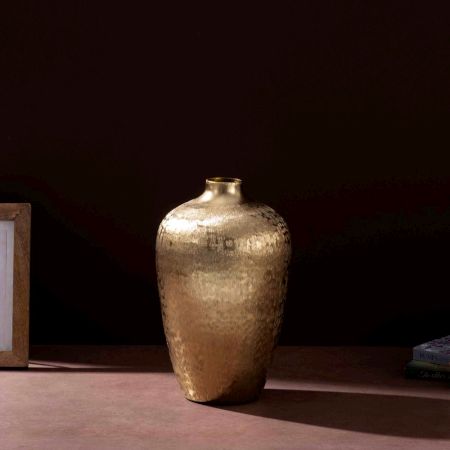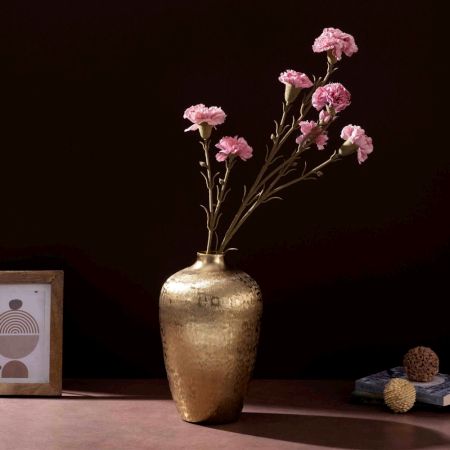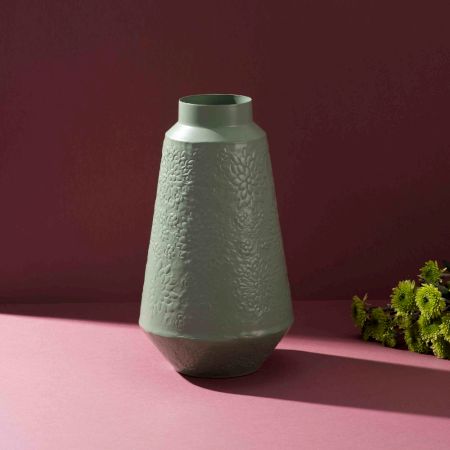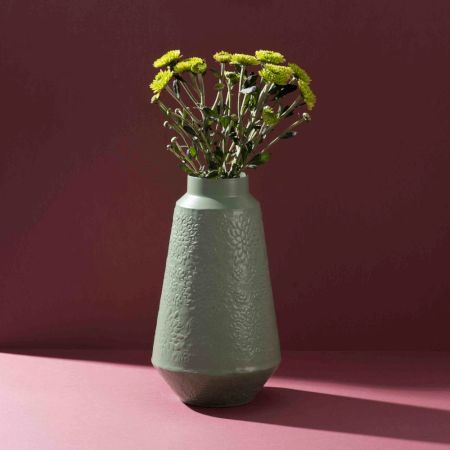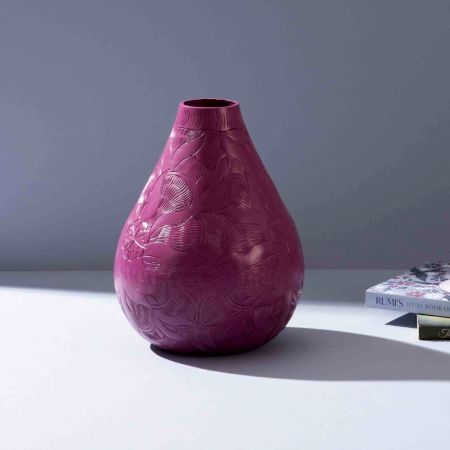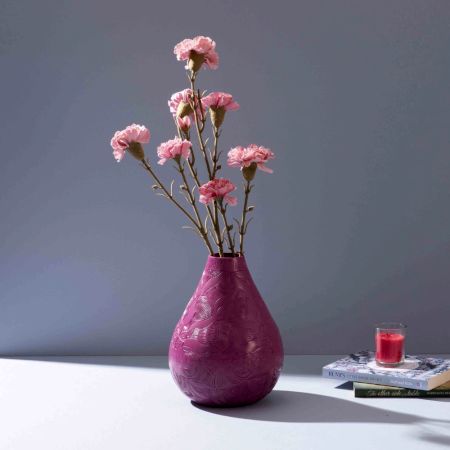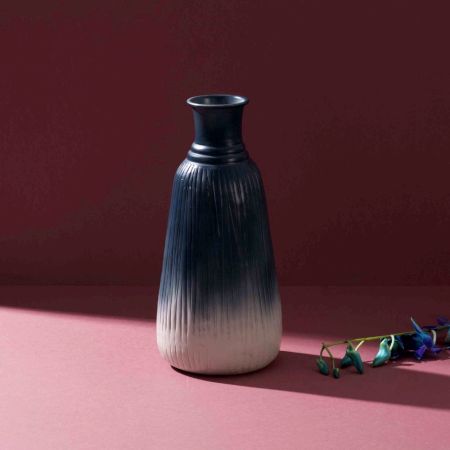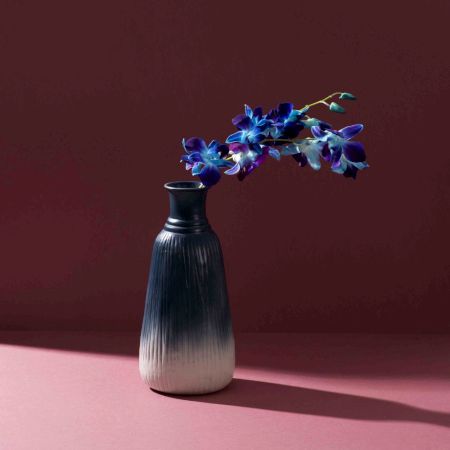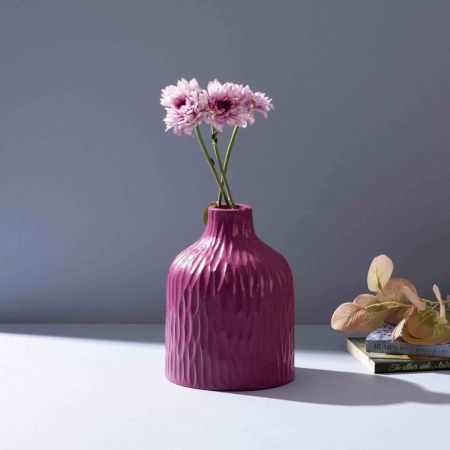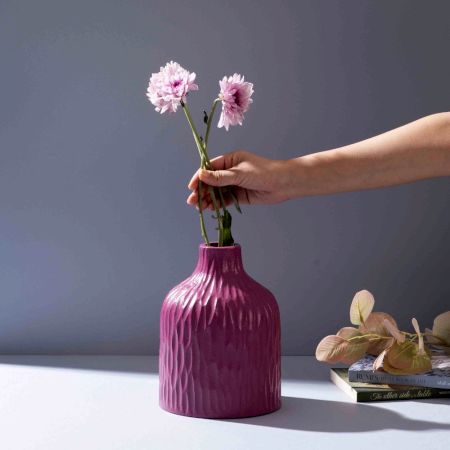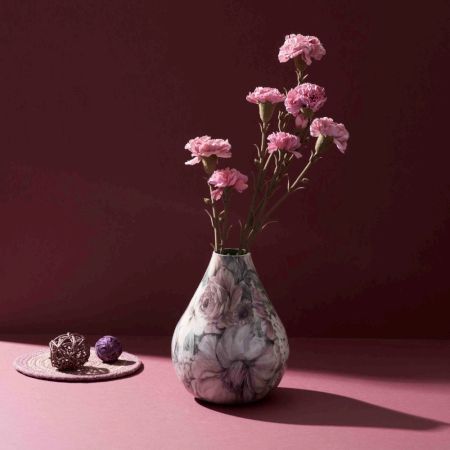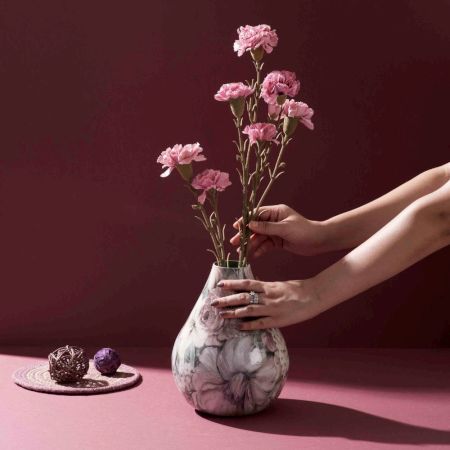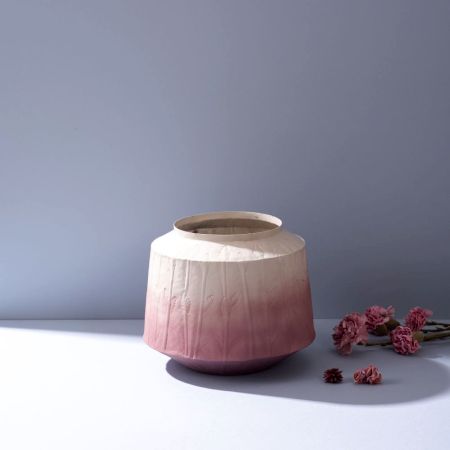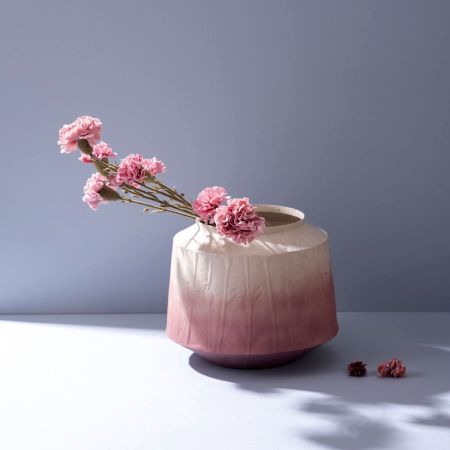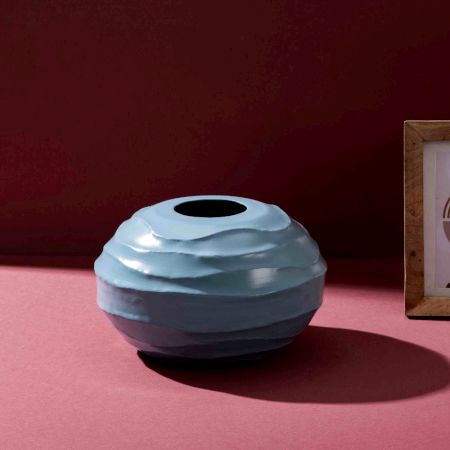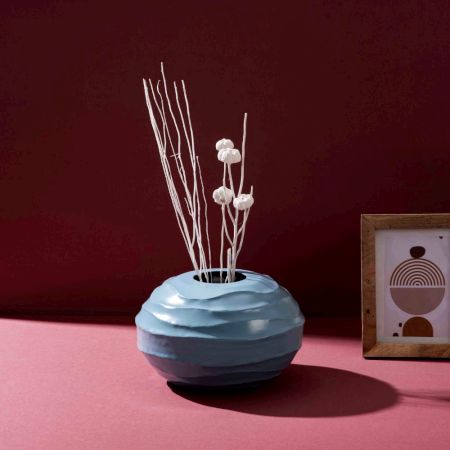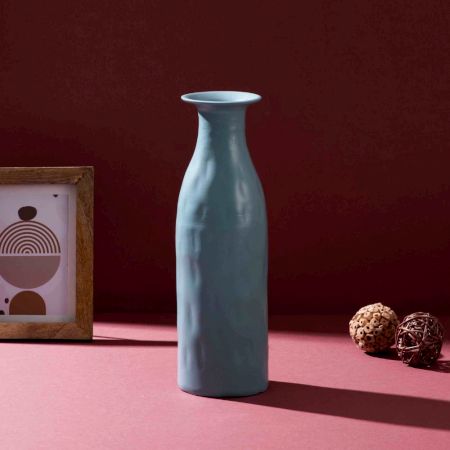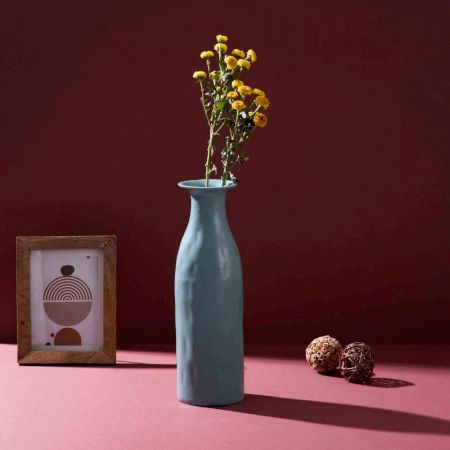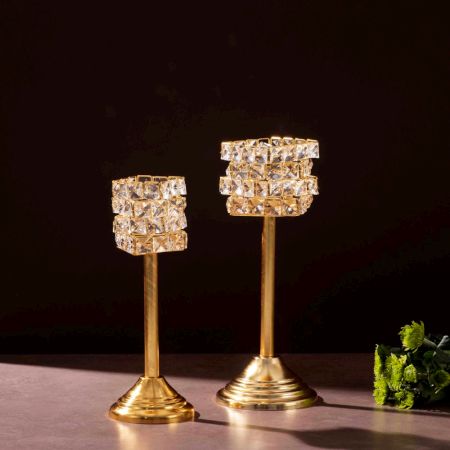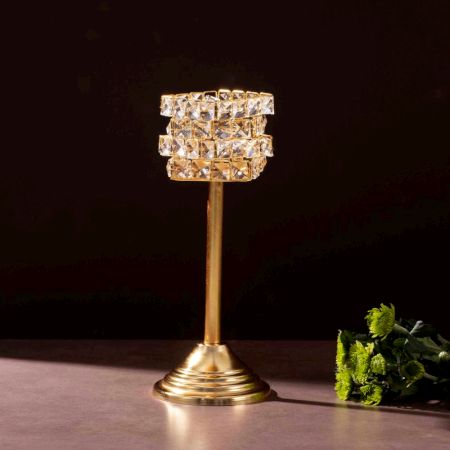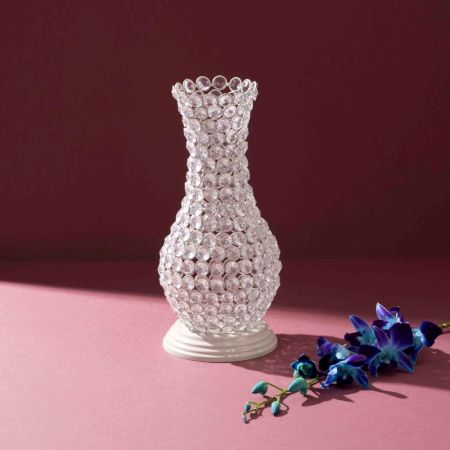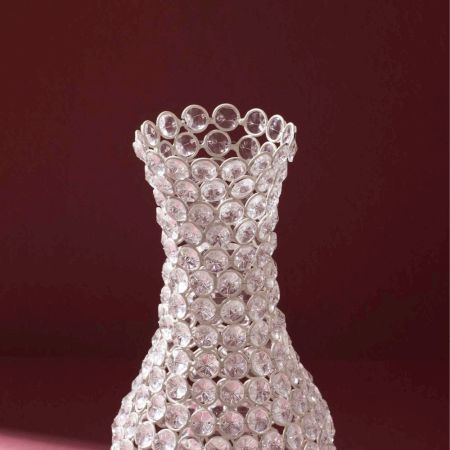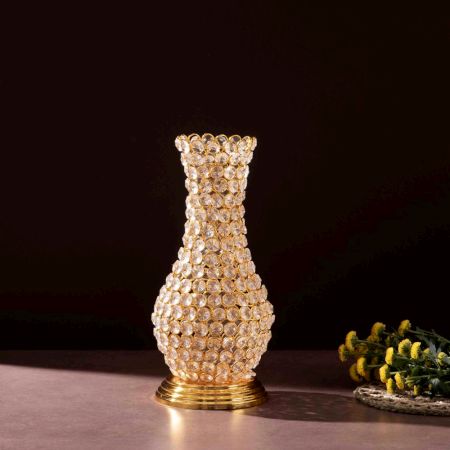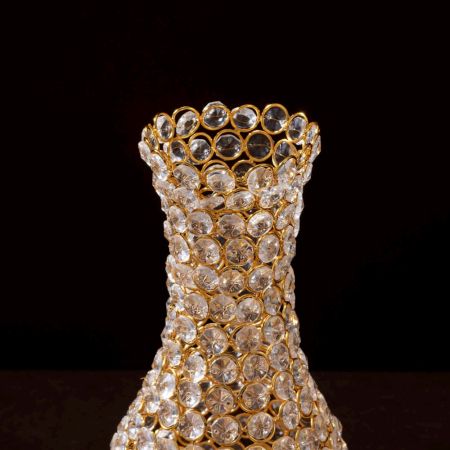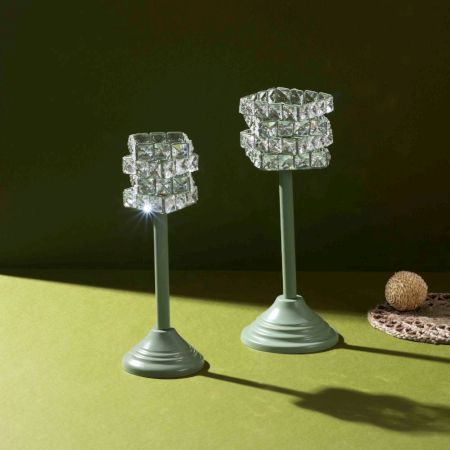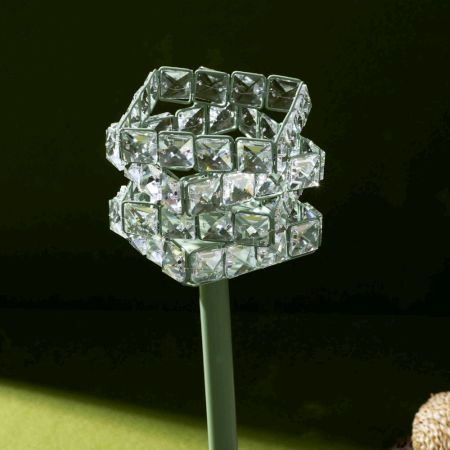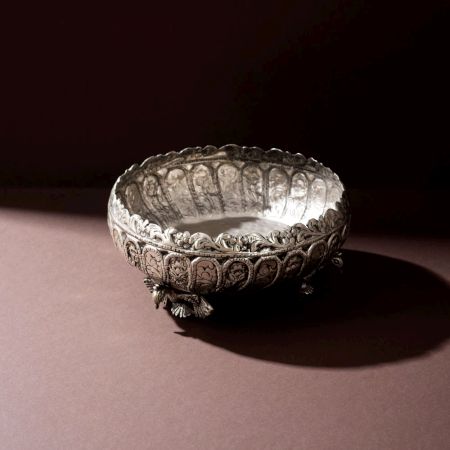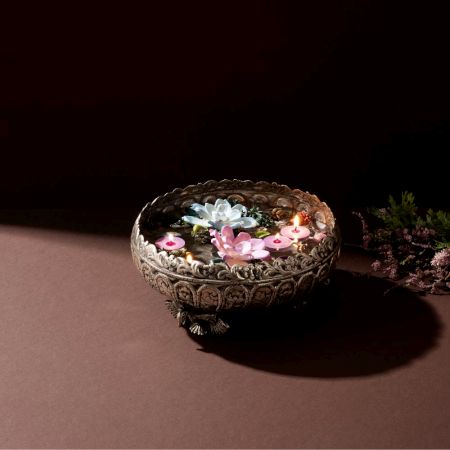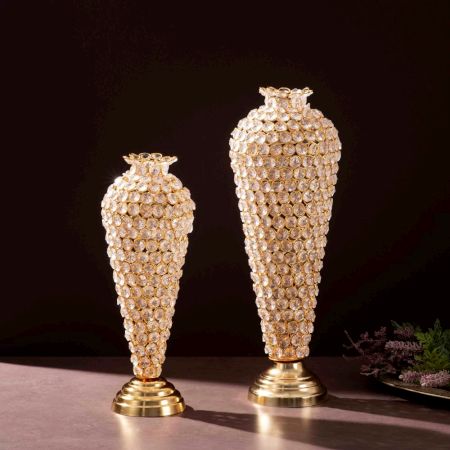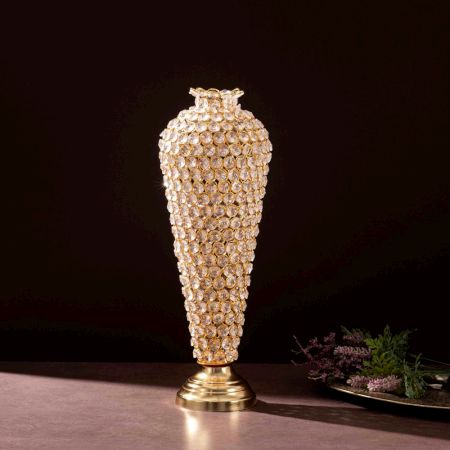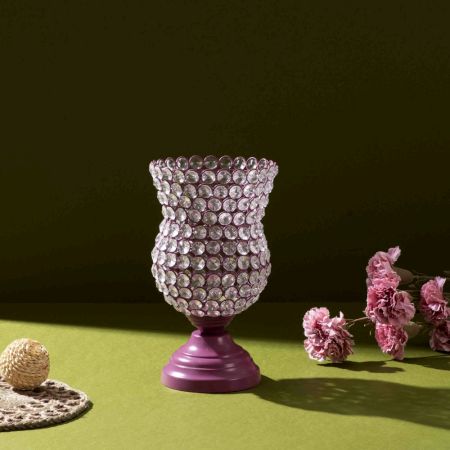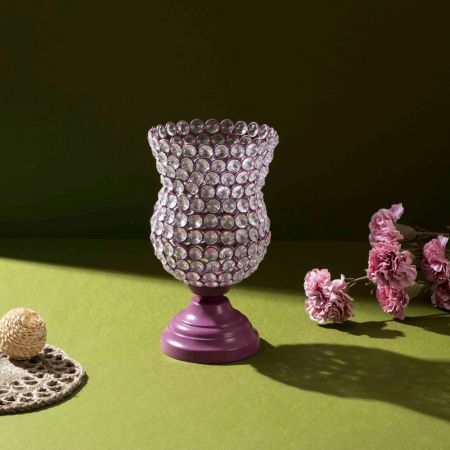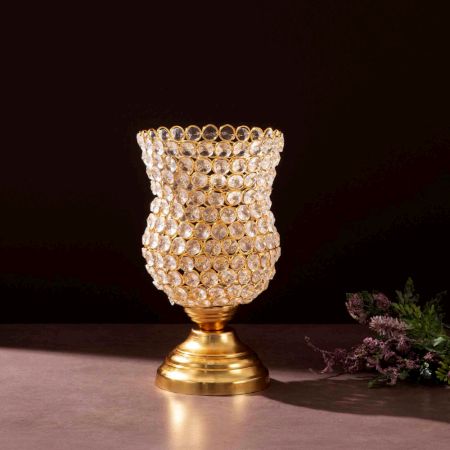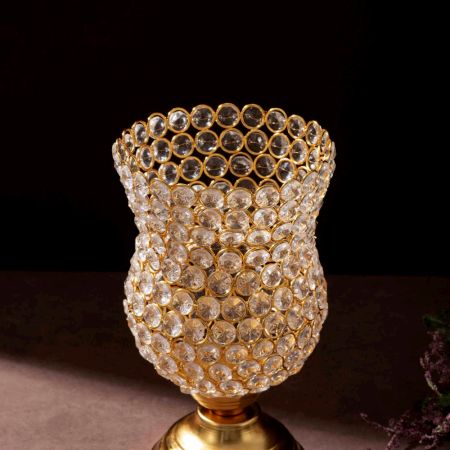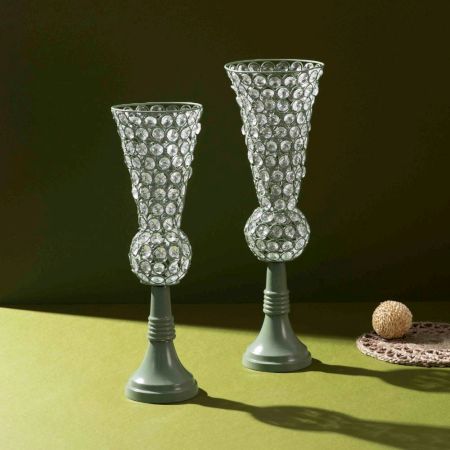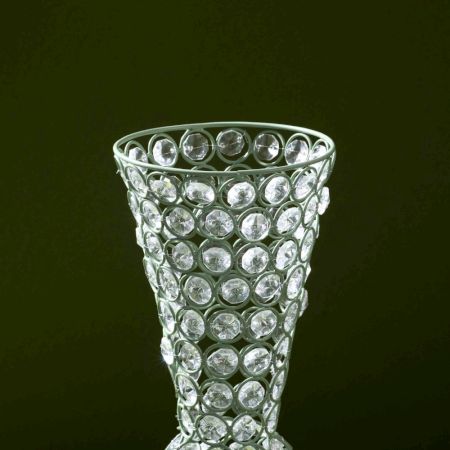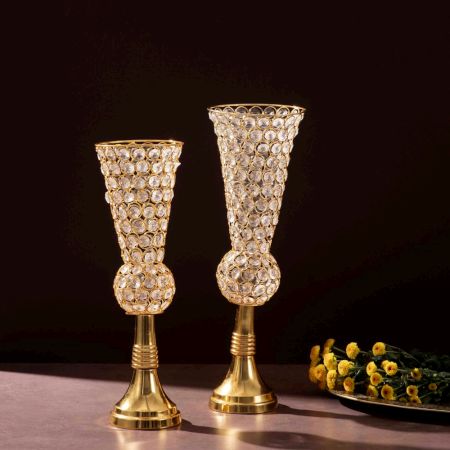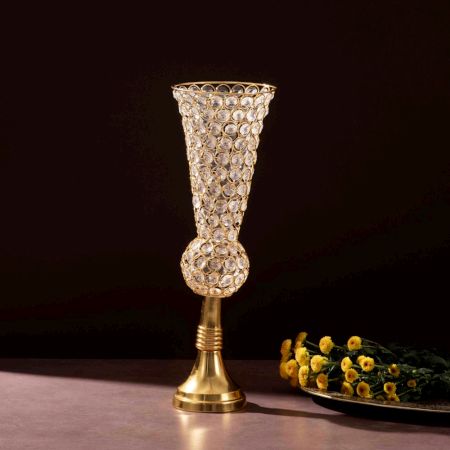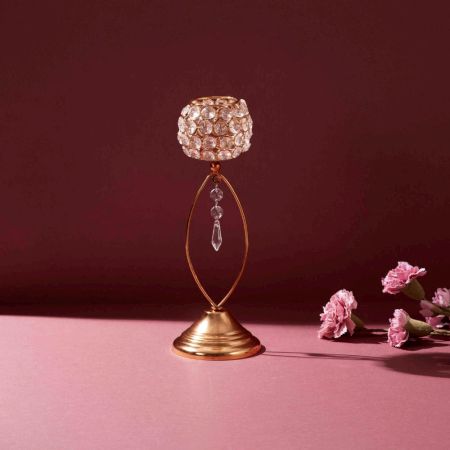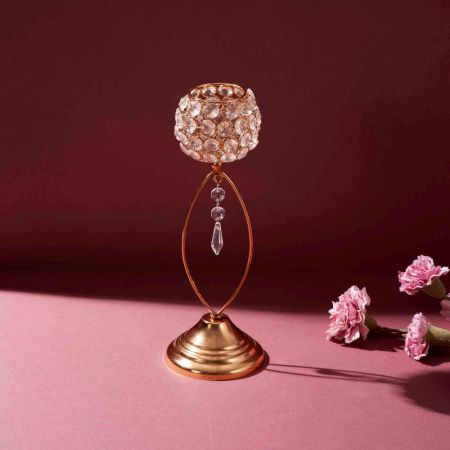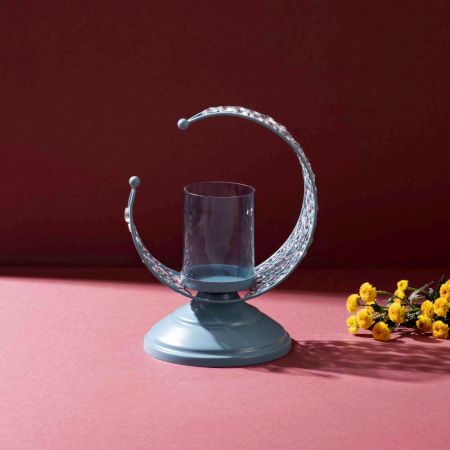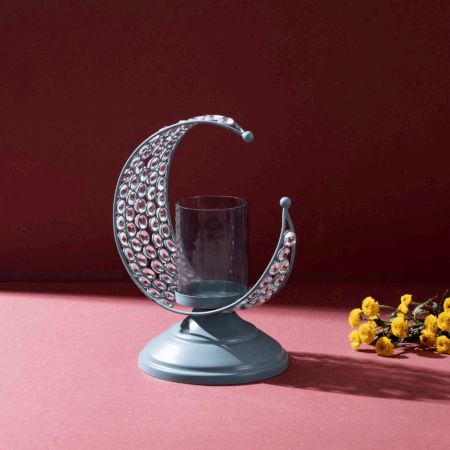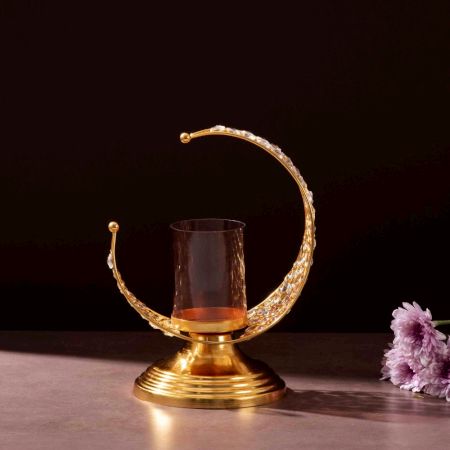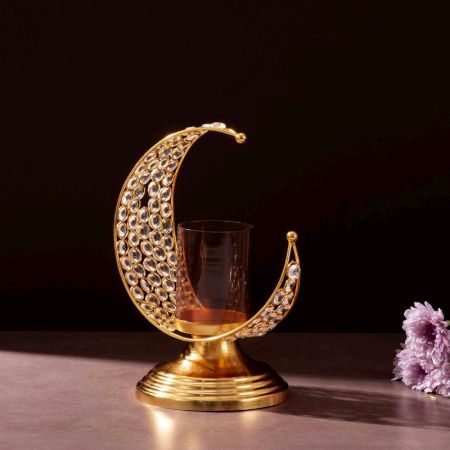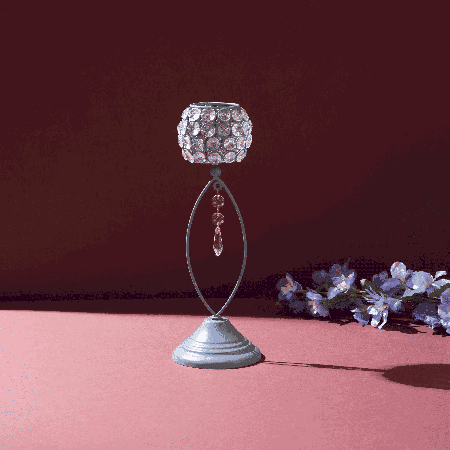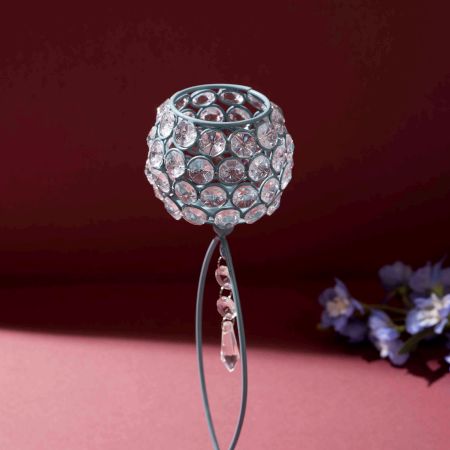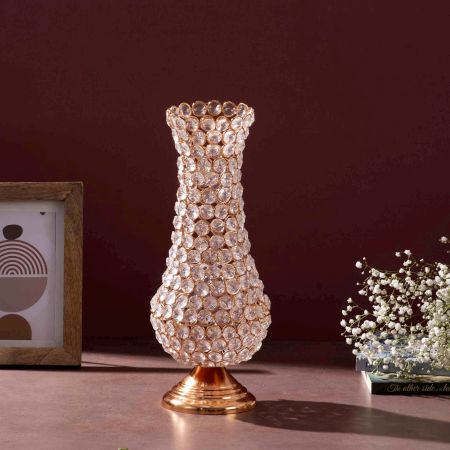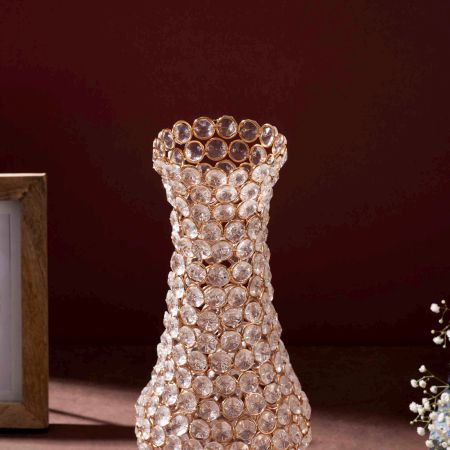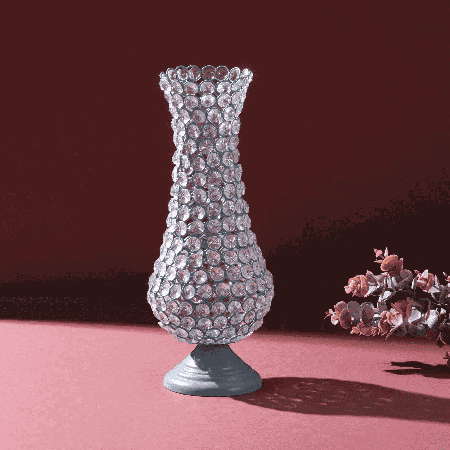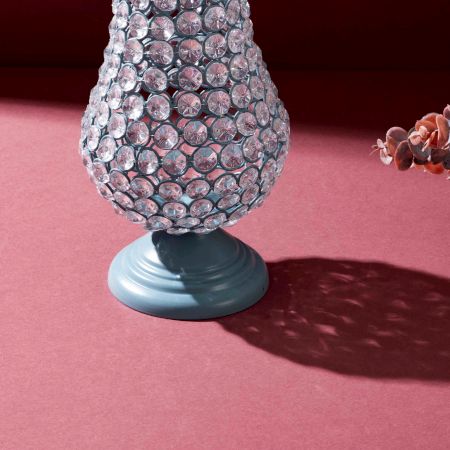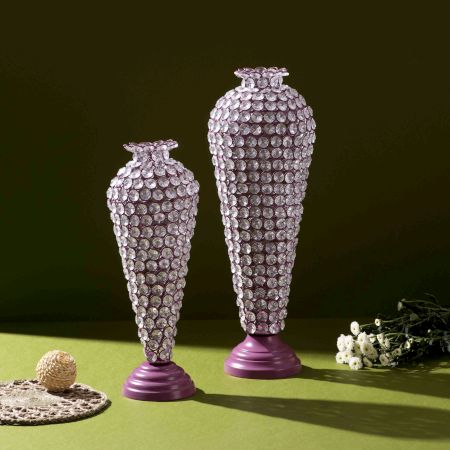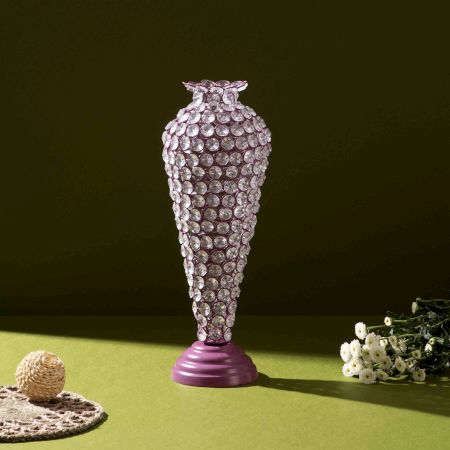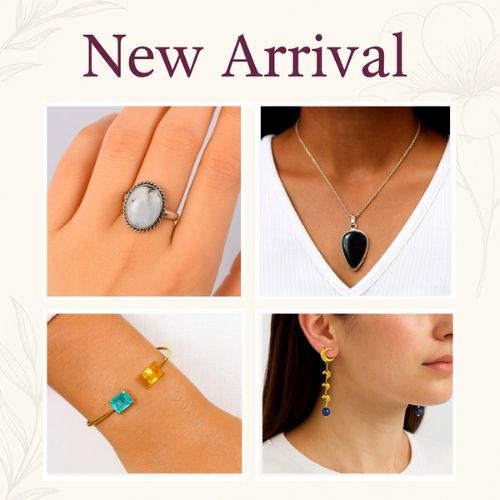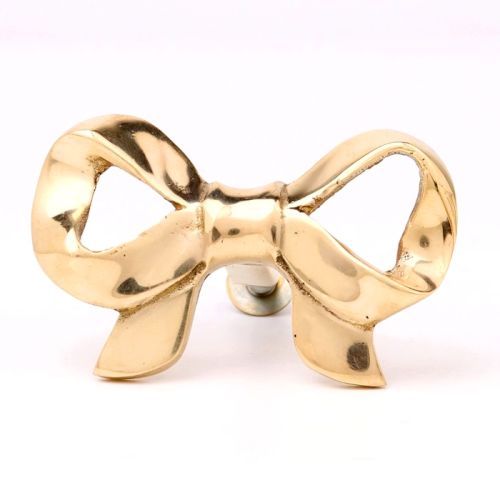General Understanding Of Vases & Planters
A vase or planter is more than utility. It is an intersection of artistry, memory, and design. Across centuries, people have placed flowers, branches, or saplings into vessels that carried stories of their soil. Some reflect delicate hands shaping clay on a wheel, others gleam in metal with engravings that whisper of dynasties. They stand in homes as quiet companions, merging nature with structure. Their presence bridges art and life, holding not just roots or stems but also continuity. In every home, they remind us that beauty thrives in the ordinary, breathing art into daily living.
What Is A Vase Or Planter?
A vase or planter is not only a container but a crafted expression of form and culture. Historically, they functioned as vessels to preserve cut flowers, herbs, or growing plants. Yet artisans elevated their role, transforming them into artistic objects that carried regional motifs and rituals. Greek amphorae held oils and grains, Chinese porcelain vases embodied dynastic artistry, while Indian brass planters adorned courtyards with auspicious motifs. In essence, they fuse practicality with meaning. Today, they serve both as décor and as reminders of heritage. A vase on a desk may hold tulips, but also a trace of timeless design.
What Emotions Or Themes Do Vases And Planters Commonly Portray?
Vases and planters often embody emotions that extend beyond their surfaces. A terracotta planter, cracked slightly at the rim, may speak of nostalgia and resilience. Floral motifs recall fertility and abundance, echoing nature’s cycles. Metal planters with engraved deities often channel spiritual blessings into homes. Themes of renewal, love, prosperity, and protection recur across cultures. In Japan, ikebana arrangements in simple vases highlight balance and impermanence. In India, lotus-carved brass vessels symbolize purity. Even contemporary glass vases carry minimalistic serenity. Thus, they do not just hold greenery, they create atmospheres of warmth, continuity, and emotional resonance.
What Are The Most Recognized Styles In Vases And Planters?
Over centuries, distinct styles emerged that defined eras and regions. Ceramic pottery with earthy glazes reflects rural authenticity. Mughal-inspired floral vases carry Persian influence, detailed with vines and arabesques. Victorian glass vases bring European opulence into drawing rooms, often layered with etched designs. Brass and copper planters with repoussé work shine with ritualistic grandeur. In Japan, stone and bamboo planters embody Zen simplicity. Each style mirrors the aesthetic ideals of its culture, some ornate, some minimal. Today’s homes blend them freely, creating eclectic settings where a rustic terracotta pot may sit beside a sleek Scandinavian glass vase.
Why Are Vases And Planters Still Revered In The Contemporary World?
Their enduring value lies in their ability to merge history with modern aesthetics. In contemporary interiors, a planter does more than hold a plant, it becomes a focal point, anchoring the room with authenticity. A hand-painted ceramic vase carries traces of tradition even in a minimalist apartment. People revere them because they embody sustainable craftsmanship, resisting mass production. They also act as timeless bridges, linking natural growth with human artistry. Whether placed on a windowsill in a city flat or in a rural courtyard, they bring warmth, grounding energy, and a reminder that art and life are inseparable.
Techniques, Mediums & Artistic Tools For Vases & Planters
The making of vases and planters reveals the intimate dialogue between hand and material. Wheel-thrown pottery required steady rhythm, hammered metal demanded precision. Each technique shaped not just form but spirit. Clay absorbed the warmth of palms. Brass captured chisel strokes like echoes of devotion. Artisans relied on patience, intuition, and inherited knowledge. Beyond function, these objects carried symbolic imagery that elevated them into narratives. What we see today in galleries, homes, or bazaars is the result of centuries of evolving craftsmanship, where tools were not just instruments but extensions of thought and imagination.
How Were Vases And Planters Traditionally Created?
Traditional creation methods reflected both material and cultural need. Potters shaped clay through wheel-throwing, refining symmetry by hand. Some preferred hand-molding for unique, organic contours. Kilns baked them into permanence, smoke often lending unpredictable hues. Metalworkers melted brass or copper, then cast or hammered them into form. Engravings and repoussé work added depth, flora, fauna, and symbols etched with deliberate care. Glassmakers blew molten glass, stretching it into fragile silhouettes. Every technique demanded time and patience, with each mark intentional. What emerged was not mass product but a singular piece, carrying fingerprints of its maker and the memory of tradition.
What Mediums Were Commonly Used In Vases And Planters?
Materials defined both function and beauty. Terracotta and clay provided porosity, ideal for plants that needed breathing roots. Ceramic and porcelain brought refinement, painted or glazed with rich hues. Brass, bronze, and copper gave resilience, often reserved for sacred or formal spaces. Silver-polished planters reflected luxury. Mixed mediums appeared too, wood inlays combined with brass, or enamel finishes over copper. Glass introduced fragility yet elegance, used for cut flowers. Each material came with cultural resonance, clay for humility, brass for grandeur, porcelain for delicacy. The medium chosen was never incidental, it shaped both narrative and presence within homes.
What Role Did Material Choice Play In Their Function And Aesthetic?
Material choice carried layered implications. Clay planters kept soil cool, making them practical for hot climates. Ceramic, glazed or unglazed, allowed artisans to play with color while still offering breathability. Metals like brass or copper provided strength, enabling larger planters and intricate engravings. Yet they also signaled status, wealthy households displayed metallic vessels prominently. Glass, while delicate, brought lightness and transience, echoing fragility of blossoms within. Thus, materials were more than physical properties, they defined utility, durability, and symbolic identity. In choosing material, artisans shaped how these vessels were perceived, humble, ornate, sacred, or everyday.
Artistic Intent And Visual Storytelling Of Vases & Planters
Every vase or planter is a storyteller. Its shape, motif, and finish are fragments of history woven into object form. A planter carved with lotus motifs whispers prayers of purity. A vase painted with vineyards speaks of fertility and abundance. These vessels, quiet yet enduring, hold narratives of faith, politics, and daily life. They became silent witnesses of civilizations, carried across borders as trade, diplomacy, or heritage. Today, when placed in modern homes, they still echo with layered meanings, reminding us that even the simplest vessel can hold worlds beyond its physical form.
What Stories Or Messages Did Vases And Planters Aim To Convey?
Stories etched on vases and planters reflected the values of their makers. In ancient Greece, amphorae depicted mythological battles and rituals. In India, brass planters engraved with peacocks celebrated renewal, while lotus motifs symbolized divine purity. Chinese porcelain vases painted with dragons embodied power and protection. Even simpler rural pottery carried themes, fields, rivers, or geometric repetitions suggesting cosmic balance. These vessels were narrative canvases, turning ordinary containers into cultural archives. By holding everyday plants or flowers, they reminded households of myths, blessings, and cycles of nature. Thus, function and storytelling blended seamlessly in their design.
How Did Artisans Express Political, Spiritual, Or Cultural Symbols?
Symbolism was encoded through motif and design. A simple vine curling around a planter could reflect abundance. Emblems of dynasties or ruling houses appeared on royal vessels, marking political authority. Religious icons, such as deities, lotuses, or conch shells, transformed them into sacred objects for rituals. In Persian traditions, arabesques and calligraphy reflected philosophical and spiritual order. In Japanese art, cranes or cherry blossoms conveyed longevity and impermanence. Through chisels, paints, and glazes, artisans turned vessels into symbolic texts, quiet yet potent, transmitting beliefs and identities across generations without a single word spoken.
How Do Colors, Patterns, And Finishes Influence Their Mood?
Colors and finishes shaped not just appearance but atmosphere. Earthy terracotta tones grounded spaces, evoking rustic simplicity. Metallic sheens in brass or silver brought grandeur, reflecting flickering lamplight in temples or homes. Hand-painted blues and greens in ceramics evoked freshness, often tied to water and sky symbolism. Patterns, whether floral, geometric, or abstract, acted as emotional cues. Intricate finishes suggested opulence, while matte glazes hinted at restraint. In contemporary settings, these choices still matter, a muted ceramic vase can soften a room’s energy, while a polished copper planter can transform it into a statement of strength and tradition.
Purchase, Collection & Investment Of Vases & Planters
Vases and planters are more than decorative containers. They are storytellers of culture, memory, and living art. A porcelain vase can carry centuries of craft, a terracotta planter may whisper of village soil and festivals. Collectors look at them not just as objects but as vessels of meaning. For the buyer, the intent is often layered. Sometimes it is for styling a corner, sometimes for building a collection, sometimes as an investment. The pursuit always returns to authenticity, provenance, and the balance between aesthetic beauty and practical use.
Where Can You Buy Authentic Or Reproduction Vases And Planters?
The search begins with intent. If you seek authenticity, heritage markets and antique fairs remain timeless gateways. In India, places like Dilli Haat or Rajasthan’s craft bazaars offer hand thrown terracotta, brass, or blue pottery pieces with deep cultural lineage. Online platforms with curation such as those collaborating with artisan clusters also bridge buyers to rare finds. For those who want the look without the cost, reproduction pieces from home décor chains and contemporary studios replicate classical forms with modern materials. They balance affordability and beauty, making them accessible for daily interiors. Always align the purchase with your purpose, heirloom, décor, or investment.
How Can You Verify The Authenticity Of A Vase Or Planter?
Authenticity reveals itself in details. Handcrafted pieces show irregularities, the slight unevenness in glaze, the faint tool marks, or the asymmetry of hand painted motifs. The patina on brass or bronze, the natural fading of colors on ceramics, and kiln signatures help distinguish originals from mass produced replicas. Provenance documents, when available, strengthen claims of heritage value. Consulting expert appraisers or local craftspeople can reveal subtle truths hidden to untrained eyes. A reproduction often feels too polished, lacking the small imperfections that signal human touch. Trust both science, tests for age and material composition, and instinct shaped by observation.
What Makes A Vase Or Planter A Worthwhile Investment?
Investment lies in rarity, heritage, and timeless appeal. A Ming porcelain vase or a brass planter from Banaras carries history and scarcity, two anchors of value. Beyond material quality, cultural resonance matters, a vessel used in rituals or tied to a dynasty often appreciates with time. Function also amplifies worth. A planter that blends utility with artistry attracts both collectors and homemakers. Many such pieces become heirlooms, treasured across generations. Their value is not only monetary but also emotional, weaving together stories of ancestors, traditions, and artistry. To invest is to preserve both culture and capital.
Care, Framing & Preservation Of Vases & Planters
To keep vases and planters alive for generations, care must extend beyond cleaning. Preservation is as much about environment as it is about ritual. A brass planter shines when polished with natural oils, while a ceramic vase thrives in stable light and gentle dusting. Their framing too matters, stands and pedestals elevate them into living art. Preservation, when done with patience, ensures they remain part of daily life without losing their cultural aura.
How Do You Properly Store And Maintain Vases And Planters?
Every material demands respect. Ceramics need soft cloth cleaning with mild solutions, avoiding harsh detergents that strip glaze. Metals like brass and bronze should be polished with lemon or natural oils, but never overdone, as too much shine erases age. Wooden planters require dry storage, away from termites and excessive humidity. Sunlight fades colors, while moisture weakens structure, so positioning matters. Dusting weekly and seasonal deep care ensures longevity. For collectors, storage in padded, ventilated cases preserves fragile surfaces. Maintenance is less about vanity and more about nurturing the quiet dignity of each piece.
What Stands Or Holders Best Complement The Aesthetic?
Display is storytelling. A porcelain vase finds harmony on a carved wooden base, grounding it in warmth. Brass planters glow when paired with wrought iron holders or stone pedestals, both sturdy and ornamental. Minimalist interiors may benefit from sleek glass stands, letting the object’s form speak without distraction. In traditional homes, marble pedestals elevate temple brassware with sacred resonance. Beyond protection, these bases frame the object like a canvas does a painting, giving it presence, stature, and safety. Choosing the right stand means respecting the object’s material, context, and emotional narrative.
Can Old Vases Or Planters Be Restored Without Losing Their Original Feel?
Yes, but with restraint. Restoration should honor the story of age rather than erase it. Professional conservators understand how to repair cracks without overpainting, or how to stabilize fading glazes without artificial gloss. Brass vessels benefit from gentle patina preservation rather than aggressive polishing. The goal is continuity, extending life while keeping history intact. Over cleaning removes layers of memory, making an old piece look unnaturally new. True restoration respects the aura of time, ensuring the vase or planter feels authentic, not refurbished. Subtlety is key, every mark holds part of its journey.
What Are Common Damages Vases And Planters Suffer Over Time?
Time leaves its mark, sometimes beautifully, sometimes harshly. Ceramic pieces suffer chips, hairline cracks, or fading pigments from sunlight. Brass and bronze encounter oxidation, developing greenish rust that if unchecked corrodes structure. Wooden planters warp or erode with moisture, while stone pedestals may gather surface erosion. Yet, many collectors embrace these imperfections. A chipped edge or worn glaze can serve as proof of age, enhancing authenticity. When managed with care, damage becomes character, not flaw. Preservation, then, is about balancing acceptance of wear with protection against irreversible decay.
Home Decor, Styling & Mood Setting With Vases & Planters
In interior spaces, vases and planters act as mediators of mood. They balance emptiness with form, silence with story. A brass planter in a hallway whispers welcome, while a porcelain vase by the window transforms light into poetry. Beyond function, they are emotional accents, bridging tradition and modernity, intimacy and grandeur.
How Can Vases And Planters Influence A Room’s Ambience?
Objects shape atmosphere. A large terracotta planter with lush greens softens rigid architecture, inviting calm. A porcelain vase with intricate blue patterns brings serenity, recalling Chinese gardens and Mughal courts. Brass, with its golden warmth, brightens even dim corridors, casting a subtle sacred aura. By placing them strategically, in corners, on mantels, beside entryways, one can shift the room’s mood from stark to welcoming, from empty to alive. They are not fillers but anchors of ambience, transforming space into memory.
What Interior Styles Pair Well With Vases And Planters?
Their adaptability is timeless. Traditional homes embrace terracotta, brass, and porcelain, blending with carved wood and earthy textures. Eclectic interiors thrive on mixing, a rustic planter beside a modern glass table tells a layered story. Minimalist or Scandinavian styles benefit from statement vases, a single tall ceramic in muted tones becomes a focal point. Modern industrial lofts find contrast in hammered brass or sleek concrete planters. Their strength lies in versatility, they do not belong to one style but evolve across them, carrying cultural echoes into every aesthetic setting.
How Do You Choose The Right Vase Or Planter For Different Spaces?
Context shapes choice. Living rooms invite grandeur, large porcelain or ceramic vases that command attention. Hallways benefit from slim brass planters, marking transitions with elegance. Studies require intimacy, subtle terracotta or stone pieces create grounding. Dining tables call for functional vases, simple glass or ceramic forms holding seasonal flowers. Proportion matters, oversized vases in small spaces overwhelm, while delicate planters in vast rooms vanish. Cultural symbolism too plays a role, a lotus planter near an altar, or a blue pottery vase recalling desert artistry. Selection is both aesthetic and symbolic, tailored to purpose.
Cultural Impact & Historical Legacy Of Vases & Planters
Vases and planters are cultural witnesses. They record how civilizations carried water, offered prayers, or adorned spaces. They stand at the intersection of craft, function, and art. Across time, they have been more than objects, they have been metaphors for abundance, continuity, and refinement.
What Is The Historical Significance Of Vases And Planters Across Civilizations?
History flows through them. In ancient Greece, amphoras carried oil and wine, their painted scenes narrating myths. In India, terracotta planters adorned temple courtyards, symbolizing fertility and offering life to sacred plants like tulsi. Chinese porcelain became both diplomatic gift and aesthetic wonder, traveling across continents via trade. Each civilization left its imprint, function meeting symbolism. They are artifacts of survival, beauty, and cultural identity. Their significance lies in bridging daily use with ritual, making them enduring vessels of memory.
How Did Different Cultures Contribute To The World Of Vases And Planters?
Cultures spoke through craft. The Chinese perfected porcelain, achieving translucence and durability unmatched in their era. Romans engineered amphoras designed for sea trade, practical yet beautiful. Persian artisans painted floral motifs echoing gardens of paradise. Indian brassware blended ritual with artistry, while Japanese ikebana vases embodied balance and restraint. Together, they created a global tapestry, each form adding vocabulary to the language of vessels. What we see today in homes, museums, and markets is a collage of these traditions, layered and evolving. Their diversity is proof of humanity’s shared yet distinct artistic pursuit.
Which Artisans And Regions Shaped The Evolution Of Vases?
Certain regions became legends. Jingdezhen in China, often called the Porcelain Capital, produced pieces so fine they reshaped global taste. Delft in the Netherlands turned blue and white ceramics into European classics. In India, the Kumbhar potter communities nurtured terracotta traditions, while Banaras brass artisans crafted planters with devotional resonance. Persian workshops blended poetry into pottery, their glazes glowing like desert skies. These artisans, often unnamed, were cultural custodians. Their skill and vision shaped standards we still admire. They remind us that vases and planters are not just crafted, they are inherited legacies of human hands.
Vases & Planters vs Other Decorative Objects
Vases and planters live at the intersection of art and function. Unlike wall hangings or statues that remain passive, they breathe, nurture, and transform with what they hold. They are living décor, always in dialogue with the seasons, with water, with soil. This duality makes them distinct. They are not just surfaces to be admired, but vessels of change, constantly reshaped by what they carry. In homes, they become silent companions: a ceramic pot on a balcony that witnesses daily life, or a tall brass vase that frames a festive evening. Their role is both ornamental and alive.
How Are Vases And Planters Different From Other Decor?
Vases and planters differ because they actively engage with life. A painting reflects a moment, but a vase changes with every flower placed inside. Planters are even more dynamic, cradling roots, nurturing growth, marking the rhythm of days. Other decorative objects exist outside time, static, unaltered. Vases and planters invite touch, care, and movement. In cultural terms, an earthen pot in India once held water, now a planter holds basil on a window sill, still carrying that lineage of function tied to daily life. Their value lies in this bridge between utility and art. They remain relevant because they do not merely decorate, they breathe with us.
What Sets Them Apart From Modern Minimalist Or Abstract Decor?
Minimalist and abstract decor often emphasizes silence, emptiness, and form stripped of excess. Vases resist this reduction. Even when simple, they carry stories of clay, glaze, and motifs rooted in craft traditions. A marble planter with carved lotus petals speaks differently than a steel abstract piece on a shelf. The distinction lies in their intimacy with human rituals. They are filled during Diwali with marigolds, during spring with lilies. Modern objects might impress with sleekness, but vases impress with warmth. They hold memory, ritual, and texture. They do not just stand in a room, they participate in its life.
How Do Ceramic Planters Differ From Metal Or Wooden Ones?
Ceramic planters breathe earthy warmth. Their porous texture feels close to soil, ideal for roots and intimate corners. Metal planters project authority, brass or copper shining in courtyards, reflecting grandeur, echoing temples and palaces. Wooden planters bring nature indoors, blending seamlessly with organic spaces, carrying the quiet creak of grain and bark. Each material alters the mood: ceramic whispers comfort, metal commands attention, wood soothes with natural rhythm. In practice, ceramics thrive in balconies, metal fits formal spaces, wood enriches rustic interiors. They are not just containers, each one sets a narrative of how nature enters the room.
Emotional & Symbolic Value Of Vases & Planters
Vases and planters are more than décor, they are emotional anchors. A clay pot passed down generations is not just a vessel, it is memory embodied. A planter gifted at a wedding carries blessings of growth and prosperity. They live in both private and collective rituals. In them lies continuity, water, earth, and heritage captured in form. They are vessels of memory as much as they are of soil or flowers.
Can Vases And Planters Serve As Meaningful Gifts?
Yes, because they embody growth and permanence. A planter is never empty, it promises life to come. That is why they are given at housewarmings or anniversaries, carrying wishes of rootedness and expansion. A brass vase gifted during a marriage may later hold flowers on countless mornings, embedding itself in daily life. Unlike fleeting gifts, these objects remain visible, used, cherished. In Indian culture, gifting a planter with a tulsi plant is an act of blessing the household. The gesture extends beyond beauty, it carries prosperity, continuity, and art into someone’s living space.
What Emotional Value Do Inherited Vases Hold?
Inherited vases hold stories no new object can replicate. They become silent witnesses of lineage, each crack, each stain, each patina telling a story. A ceramic vase from a grandmother may recall family gatherings, seasonal rituals, or the scent of flowers she once arranged. Beyond material, they carry emotional permanence. They remind us that beauty survives time, that memory can take shape in clay or brass. Inherited vases blur the line between object and heirloom. They are less possessions and more carriers of history. To hold one is to touch not just the object, but the hands of those who came before.
Why Do People Feel A Deep Connection To Vases And Planters?
Because they embody continuity and intimacy. A vase on a desk might hold flowers from a first date, later from a child’s hand. A planter on a balcony witnesses mornings, evenings, seasons shifting silently. Unlike many decorative objects, they evolve with us. They hold not just water or roots but also our moods and transitions. In cultures worldwide, from Japanese ikebana to Indian brass lotas, these vessels are central to ritual and daily life. That connection endures because we do not merely look at them, we interact, we depend, we remember. They are vessels of both life and memory.
Frequently Asked Questions (FAQs)
What Defines A Vase Or Planter As Special?
Age, craftsmanship, and aura define its uniqueness. A vase becomes special not only when it is old, but when it carries the touch of human hands, hand-thrown clay, hand-etched motifs, or natural patina developed over time. Typically, pieces 20–30 years old with distinctive artistry become classics. But even new pieces can feel special if crafted with intention. What matters is not only when they were made, but how they embody skill, tradition, and timeless form.
Can Vases And Planters Be Recreated Authentically Today?
Yes, artisans today still use age-old methods, pottery wheels, kiln firing, metal casting, to recreate traditional forms. A ceramic planter fired in a rural kiln can look and feel like one from decades past. But what cannot be recreated is the aura of time. Patina, slight wear, and lived history remain unique to older objects. Yet, contemporary recreations offer their own authenticity, made by hands continuing traditions, keeping cultural memory alive. Authenticity is not only about age, it is about intention and method.
How Do You Protect Vases From Light And Moisture Damage?
Protection depends on material. Ceramics need stable temperatures and minimal exposure to sudden heat shifts. Metals like brass or copper should be kept away from humidity to prevent tarnish. Wooden planters require airflow and occasional oiling. Across materials, avoid direct sunlight which can fade or crack surfaces. Gentle cleaning with soft cloths works better than chemical agents. Protective coatings help but should never mask natural textures. Preservation is about balance, allowing age to show without letting damage consume.
Are Vases And Planters Still Relevant In Modern Interiors?
Absolutely. They act as cultural anchors in contemporary spaces. In minimalist apartments, a terracotta vase adds warmth. In modern villas, a tall brass planter becomes a centerpiece. They bridge heritage with trend, function with beauty. Their relevance lies in adaptability, they can be rustic, ornate, or sleek, depending on context. More importantly, they remind us that decoration can also be alive. In a world of mass-produced objects, vases and planters remain rooted in craft, carrying human presence into interiors.
Can Vase Styles Be Used In Contemporary Decor?
Yes. Vase styles adapt fluidly across modern settings. A Mughal-inspired lotus brass vase can stand beside a glass coffee table, creating contrast. A Scandinavian home can still host Japanese ikebana vessels, adding depth. They enrich contemporary design because they resist uniformity. Their charm lies in being accents, small yet powerful statements. By blending old-world detail with current layouts, vases and planters prevent spaces from feeling sterile. They infuse personality, making homes both stylish and rooted in history.
